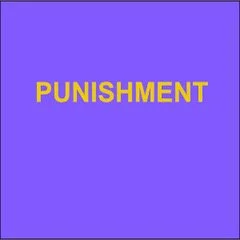By Rachel Cordle and Eleanor Gale
This synthesis provides an overview of evidence on what works to reduce reoffending, updating evidence previously published by the Ministry of Justice (MoJ) in 2013 and 2014. 1,2 It revisits some of the same areas as the previous reviews, including more recent evidence and incorporating new areas such as debt and community ties. Given the breadth of different activities and interventions that exist, this summary focuses upon the evidence base for some of the key areas of MoJ policymaking, but it is clearly not exhaustive. Evidence is drawn primarily from a series of Rapid Evidence Assessments (REAs) conducted by academics working in the field of reducing reoffending in 2022. REAs were used to compile sections on: Accommodation, Education, Employment, Finance, Benefits and Debt, and Community Ties. The REAs focused upon the effectiveness of these types of interventions to reduce reoffending but included some additional follow up questions such as features of effective interventions of different types, and for whom they may be most effective. A REA was also commissioned on theories of desistance. For the remaining sections, MoJ analysts conducted internal reviews of recent evidence. When assessing effectiveness, findings from meta-analyses were used where available, as there can be greater confidence in findings drawn from a series of studies than from single evaluations. Studies that included any comparison group were eligible for inclusion, with a focus on evidence drawn from England & Wales (although international studies were eligible for inclusion). Table 1 summarises the overall strength of the meta-analytical evidence base for the effectiveness by intervention type and provides an indication of the scale of the potential reduction in reoffending for some specific intervention approaches (where relevant). Some interventions appear to have potential to deliver larger reductions in reoffending than others, however it is likely the greatest reduction will be achieved where interventions are well-matched to the individual. Where the evidence base is classified as ‘insufficient’, this reflects an evidence gap and does not imply that type of intervention does not work. Table 1 includes only the results of meta-analyses when providing an indication of the potential scale of impact by specific intervention approach. In areas where there are lots of different types of interventions used (such as employment), the meta-analytical evidence base may be weakened by the lack of comparability across studies. In addition, some of the areas covered are more closely linked to reoffending than others. For example, there is evidence that reoffending is lower amongst prison leavers who find employment. In contrast, there is a more nuanced, moderated relationship between mental health and reoffending. Mental health (like physical health) is a foundational area for work with offenders but does not in itself link directly to reoffending. Note also that table 1 reviews only evidence for the potential scale of effectiveness. Readers should refer to the relevant chapter for more detail on the wider evidence base for specific interventions of interest. Evidence gaps common across the different intervention areas include a need for more UK-based evaluation, a need for individual evaluation reports to better capture programme design characteristics that can affect success, and a need for greater understanding of what works best for different groups. It would also be helpful to have more consistency in how outcomes are measured, in order to more reliably compare which interventions have the biggest impacts.
London: Ministry of Justice, 2025. 60p.


